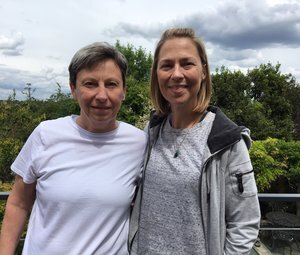Fascia; it’s been a bit of a buzz-word in the yoga world of recent, but for good reason! Fascia has two main roles in the body: physical support and communication. In its normal state, fascia is fluid, containing a high proportion of water, consistent with the 70% water content of our bodies. This high fluid content enables fascia to move freely as we move and to constantly shift shape and adapt its complex three-dimensional network to every demand, we make of it. Damage fascia, however, and this creates a pull or snag in the web, similar to a snag in a jumper or a pair of tights that bunches up around a hole and begins to pull on neighbouring areas. People who have chronic pain or injuries, will be able to feel fascia as tightness or pain often impacting other areas of the body. For instance, tight hamstrings or hips can create back ache and tight neck muscles can constrict the vagus nerve which can impact the ability to engage the parasympathetic action of the nervous system and can, just like pain, trigger the stress response.
I went to the Thai yoga massage and myofascial release workshop with Amanda Oswald and it was so insightful. What appear to be small actions and longer holds will release fascia, releasing those tight areas and even scar tissue. Fascia is wonderful and a lot of modern-day healing will start to come from this technique... especially in chronic conditions and pains.
Amanda has written a book ‘Living pain free’ - read it! Ideally before you have a chronic condition and you have to work on reversing the damage... so especially if you do an action repeatedly; sitting at a desk, behind a computer, or you go running, cycling or any other repetitive action and you don’t stretch… Even though the physical exercise is good for you, just be mindful of putting your body in a repetitive pattern.



